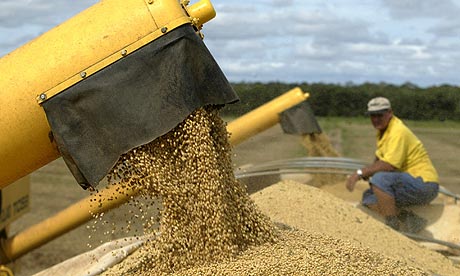The fragile bit of Bric
Despite Brazil's powerhouse reputation, Latin America needs to learn from China to secure future economic growth

Over the past 30 years, both China and nations across Latin America have sought to move away from inward looking economic models and integrate into the world economy. In 1980, the collective economic output of Latin America was seven times as large as that of China. Now, China's economy is larger than all of the economies in Latin America combined.
In the process of leapfrogging over Latin America, China has tugged some Latin American economies along with it, but the longer run implications could prove less favourable. China's rise has been good for Latin America over the past decade. The region's exports to China jumped nine times between 2000 and 2009 in real terms, far outpacing the Latin America's overall export growth. In 2009, Latin American exports to China reached $41.3bn, almost 7% of all Latin American exports. The pre-financial crisis peak, 2006, for exports to China was $22.3bn.
These trends have helped spur economic growth in Latin America not only because China is an export destination, but also because Chinese demand constrains global supply and thus raises the price that Latin American's receive for exports from other trading partners as well. However, this windfall has not been widely shared. As I show in my new book with Uruguayan political economist Roberto Porzecanski, The Dragon in the Room: China and the Future of Latin American Industrialisation: five countries and a handful of sectors generated just over 80% of all regional exports to China. China is, in part, fuelled by iron and copper ores, crude oil and soybeans from Argentina, Brazil, Chile, Colombia and Peru. Chinese foreign investment, now totalling over $30bn, has flowed in large part to the same countries and sectors.
In the longer-run future, it is not clear whether China will be a sustained source of demand for Latin American commodities. Even if China does maintain its appetite for Latin American commodities, the consequences may not all be beneficial. China could accentuate Latin America's (over)reliance on commodities exports and jeopardise the region's capabilities for diversifying its export basket toward manufactures and modern services. Not to mention that it could cause long-lasting social and environmental effects.
For example, between 1995 and 2009, Brazilian soy production quadrupled, in part due to the fact that approximately half all Brazilian soy exports went to China. At the same time, employment in the soy sector shrank as cultivation became highly mechanised. Moreover, increased demand for soy has been linked to the deforestation of some 528,000 square kilometers in the Brazilian Amazon. Such deforestation has threatened the livelihoods of many indigenous Brazilians and contributed to accentuating global climate change.
When conducting our research, we found that nearly all of the exports from Latin America and Caribbean are "under threat" from China. Drawing on previous work from the Asian Development Bank, we characterise a threat as those products in world markets where China's market share is increasing, while the market share of Latin America and the Caribbean is either decreasing or static. We find that 92% of Latin American manufacturing exports fall under threat from China, representing 39% of the region's total exports.
China is not to blame. These trends are largely the result of policies taken by Latin American countries. Many adopted "shock therapy" or the "Washington Consensus." Governments rapidly liberalised trade and investment regimes and reduced the role of the state in economic affairs, often through privatisations that, in a number of cases, went painfully awry.
China has taken a more gradual approach to integrating with world markets. In contrast to Latin America, China embarked on a programme of economic reform aiming at strategic integration into the world economy by following a "dual track" policy. This consisted of liberalising foreign investment and in-flow of imported inputs to selected industries, while buttressing those sectors to the point of maturity and nurturing other sectors until they were ready to face competition with imports.
Latin America would do well to learn lessons from China, especially in the realm of industrial development, and to ramp up some of its homebred innovations. There are some encouraging signs. Brazil's development bank has begun to take industrialisation seriously again. Chile houses a stabilisation fund that skims some of its copper revenues and hoards them for dips in demand and prices, while freeing funds for modest environmental protection. Exports to China – and China's general example – could be an opportunity for Latin America. Or not.








No comments:
Post a Comment